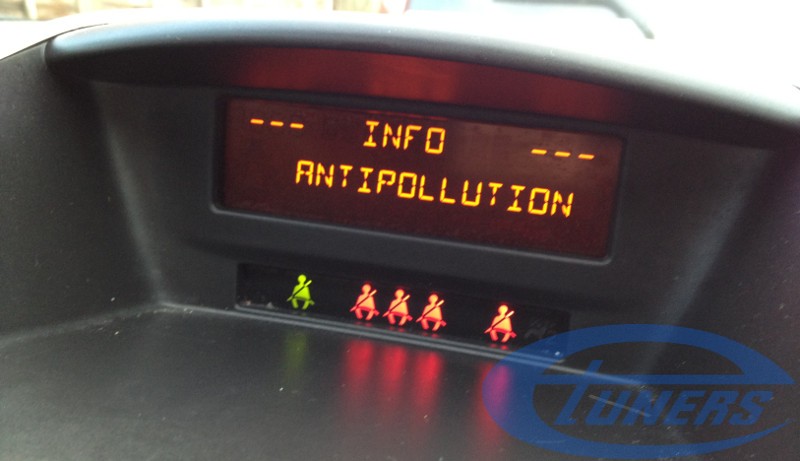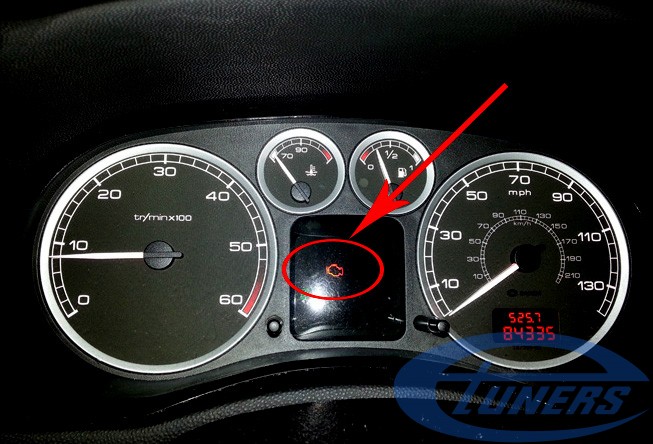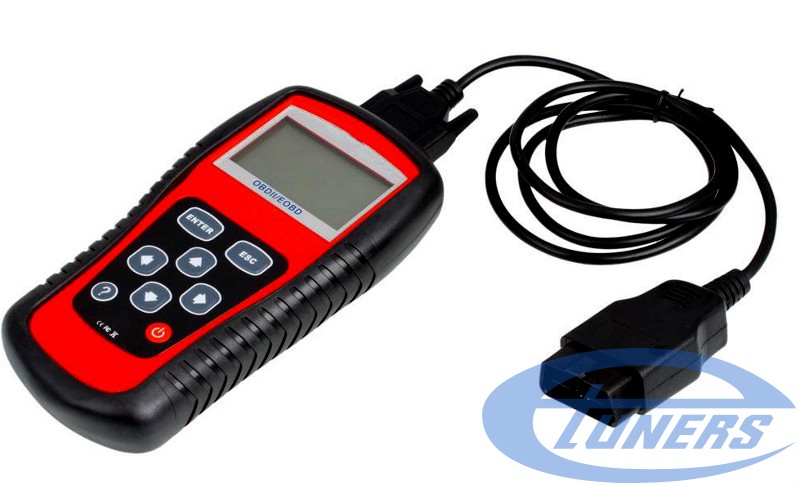Peugeot-Citroen fault codes – What to do and how to deal with them

Peugeot 207 – Central console – fault warning
I remember the horror I felt the first time I saw the Check-Engine Light turn on suddenly, on the instruments cluster of my Citroen. I thought my engine would stop working or explode at any moment and that I should rush to the nearest garage as quickly as possible. Neither was the case. But I did it just to be safe. The fault code was because my ECU did not like the fuel quality I had been using. It did not like it at all, which led it into throwing fault codes and triggering a Check-Engine Light. The engine computer protected the health of the engine and sent me to the garage – that is what is was supposed to do.
Nobody likes fault codes. Even more so the annoying ones. You know, those that do blips and other -annoying- sounds every time you start the car. Modern Peugeot and Citroen cars have many ways of informing their drivers that something is wrong. Whether we like them or not, they are absolutely necessary. It means the onboard computer systems on your car are trying to tell you something is going wrong.
In case you have a Main information display like on the Peugeot 206-207-308-3008-508 or the Citroen C3, C4, C5, DS3, DS4, DS5, there is a chance that the display is telling you what is going on. “Depollution system faulty” or “engine repair needed” are general fault alerts. Designed to grab your attention.

Peugeot 307 Check Engine Light
Get worried or not?
I divide fault codes into three categories: silent (because you will not see them), annoying (trying to get your attention) or intimidating (almost scary you so you cannot pretend they are not there). The car tries to grab your attention based on the level of danger you are into. Remember it can only communicate with you via visual (lights flashing or messages coming up) and audible warnings (blips and bells and whistles). The louder the noise and the brighter the light, the more important the fault that has appeared.
Silent faults appear within the computerized onboard systems without the driver knowing they are there. They appear in the computers memory (but not to the driver) whenever something small is going wrong, that is probably not important enough to let the driver know. For example, low battery voltage across the car. These faults stay in the memory until the car gets checked for servicing. The mechanic decides on whether to fix them or just delete them and observe if they come back. No visual or audible warnings for silent faults.
Annoying faults announce themselves to the driver. The car is telling you it needs your attention. Most of them, you can live with until they get fixed. A side-lamp that needs to be replaced, for example. The car wants you to fix it because it is a problem. Low tyre pressure too. You can inflate your tyre. But you will still get visual and audible warnings for annoying faults.
Intimidating faults. If you have a flat tyre or your engine oil pressure is too low, you will get an intimidating fault. Bells and whistles will start ringing so that you can understand this is a dangerous situation. The car will use all ways of communication with you, the driver, to tell you you need to STOP NOW because your life is potentially in danger. You will get strong visual and audible warnings from the car for intimidating faults so you cannot ignore them or keep driving the car.
Start panicking?
First and most important piece of advice: Remain calm and try to find what is going on. Go through this checklist quickly:
1. Is there any information from the car about the fault? Do you see any STOP signs come up or strange blips sounding repeatedly? If you see STOP, do so safely. Pull out on the next exit or to the side of the road or the emergency lane. Do not just stop in the middle of the highway, putting yourself and those around you in danger.
2. Are there any obvious signs in engine performance that something seriously wrong is going on? If so then it is a good idea to visit your closest PSA garage or dealership and have the car checked.
3. Is it something that can be fixed based on its description? When the driver can do something about the problem, there is a good description of it from the car and it comes up in the information display.
Low engine oil level is something that you can fix by topping up oil. Low tyre pressure can be fixed by inflating the tyres. These are types of warnings that can be dealt with from the driver, not requiring assistance and the car is telling you exactly what is wrong so that you can fix it immediately.
Can I check it myself?
That depends on your level of technical competence and the tools you have available. If what you have is a Check Engine Fault (little engine lamp in your instruments cluster) then it means the Engine ECU has the problem and you can check for fault codes using a range of tools, including a cheap OBD2 fault reader.
If the problem is coming from elsewhere in the car, like airbags, electrics or tyres etc then you have to use Peugeot Planet System or Lexia or Diagbox to have the car checked.
What are Peugeot Planet System, Lexia and Diagbox?
These are the manufturers’ diagnostic systems. PPS and Lexia used to exist as different entities but they have now become one – Diagbox. They are very expensive systems: PSA dealerships and authorized repair shops use them to communicate with and service the cars. They are not common tools for the average car enthusiast to have. They are not very friendly to the average user either because they were designed to be used by trained professionals.
What to do?
Use some common sense – you are the driver. You decide what is wrong and what is right. If anything feels wrong or drives wrong, it means you need to have the car checked or check it yourself. I prefer starting with checking it myself, but my skills and experience and equipment allow me to do so. I always carry in the car a cheap portable OBD2 fault code reader that takes power from the OBD port. These tools are so cheap they are not worth not having. In modern cars they can be much more useful than a wrench.

OBD2 fault code reader
If my OBD reader picks up faults, I read them carefully. Take photos with my mobile phone. When I see major problems or faults I cannot read, it means I am going home in a tow truck, not risking my engine, my car and my life. Remember that a cheap OBD2 fault code reader does not replace the manufacturer’s specialized equipment, it is just there to give you a first idea of what is going on. Do not rely on it fully because it is what it is – a cheap device for quick and easy diagnostics.
What do we call fault codes? These are the terms professionals use to describe them.
You can find fault codes being described as:
- Fault codes
- Diagnostic Trouble Codes -> DTC
- Trouble Codes
- OBD faults
The Engine Light lamp is also called:
- Malfunction Indicator Lamp (MIL)
- Check Engine Light (CEL)
Two quick examples
A few months ago, I was driving on the highway and suddenly got a check engine light and a blip. No noticeable different in the engine’s performance. the car would drive very well still. Luckily enough, I had my OBD2 fault code reader with me. On the next stop I pulled out of the highway, stopped the car and checked it for faults. It was a P0420 fault for “catalyst system low efficiency”. Which meant that my catalytic converter (which is an exhaust filter essentially) was reaching the end of his life. No harm done, the car is still driveable although the cat converter is not working properly. But the only way to tell is after checking what is wrong.
If I did not have my OBD2 fault code reader, I would not have been able to tell for sure whether the problem was critical or not. Thankfully, I did so it only took a few seconds to figure out what was wrong, clear the fault and continue my journey.
A few weeks ago I was once again traveling to another city. This time I noticed as I was driving that the car lost its performance. Then, shortly after this, I got a check engine light. When things happen in this order of precedence, it is almost certain that something mechanical is at fault for the engine’s performance (and not the fault code itself). I used my OBD2 fault code reader again, to find out that the high pressure fuel pump was malfunctioning. Which causes major problems in fuel supply to the engine. I decided not to risk it and have the car towed to the nearest PSA garage. After replacing the high pressure fuel pump, everything was back to normal again and I was on my way.
This was a case of obvious problems that were having direct impact on the cars driveability. When this happens, do not risk it! Find out what is going wrong. It is always important for the driver to know the exact health status of the car, so that the car does not endanger the driver’s life or the life of those around it.


































